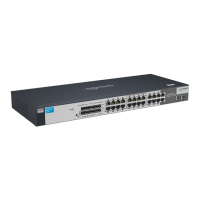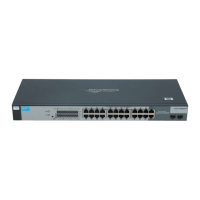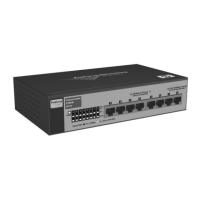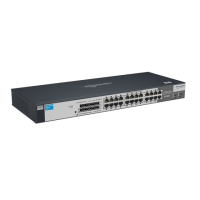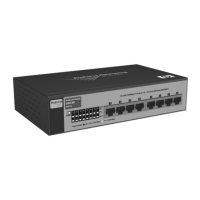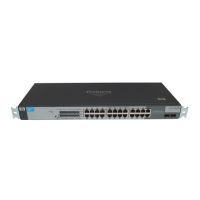2-7
Status Pages
Trunk
Trunk
The Trunk Status page displays the configuration summary and status of each trunk. To display this
page, click Status > Trunk in the navigation pane.
Figure 2-5 displays the configuration summary and status of a trunk named Trunk1. This trunk is
configured in dynamic mode and has 3 and 5 interfaces as its active members.
Figure 2-5. Trunk Status Page
Table 2-3. Trunk Port Configuration Fields
For information on configuring trunks, see “Trunk Configuration” on page 6-1.
Field Description
Trunk An ID assigned to the trunk by the system when the trunk is created.
Name A user-created name for the trunk.
Type • Indicates whether the trunk is Static or Dynamic.
• Dynamic trunks use the Link Aggregation Control Protocol (LACP, IEEE standard 802.3ad). An
LACP-enabled port automatically detects the presence of other aggregation-capable network
devices in the system and exchanges Link Aggregation Control Protocol Data Units (LACPDUs)
with links in the trunk. The PDUs contain information about each link and enable the trunk to
maintain them.
• Static trunks are assigned to a bundle by the administrator. Members do not exchange
LACPDUs. A static trunk does not require a partner system to be able to aggregate its member
ports.
Admin Status Displays whether the trunk has been enabled or disabled administratively. When disabled, no
traffic will flow. The messages that members of the trunk exchange in order to manage the trunk
(LACPDUs) will be dropped, but the links that form the Trunk will not be released. The default is
Enable.
Link Status Displays whether the link is up or down.
Static Mode Displays whether Static mode has been enabled on the trunk. When static mode is enabled, the
trunk does not transmit or process received LACPDUs. The member ports do not transmit LACPDUs
and all the LACPDUs it may receive are dropped. A static trunk does not require a partner system
to be able to aggregate its member ports.
Trunk Members List of members ports in the trunk.
Active Ports List all active member ports in the trunk.
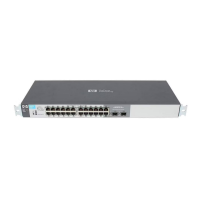
